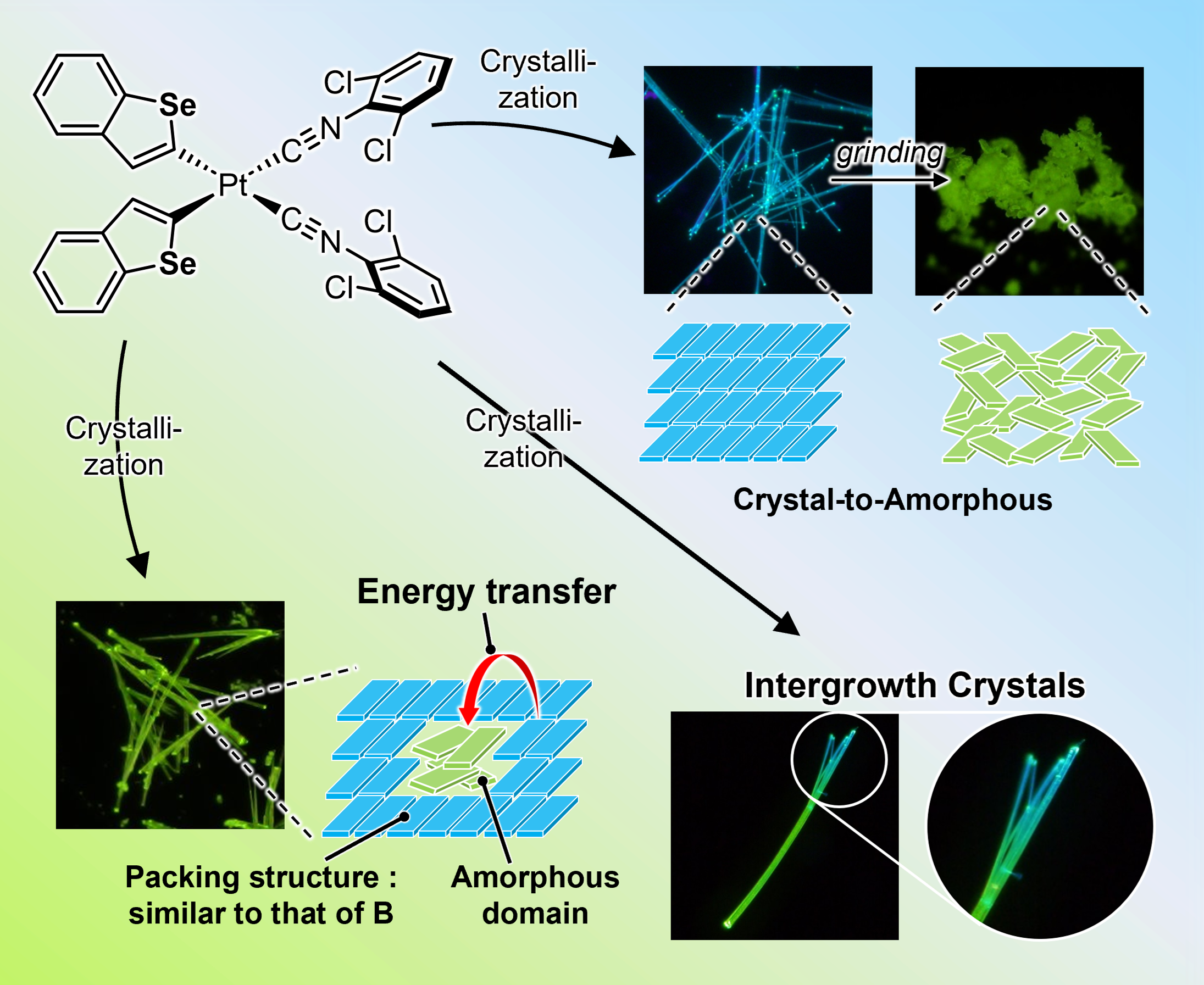
NEWS
Newsletter of the Research Institute of Green Science and Technology
Articles on our latest research, the Green Science Café, and recent press releases were featured in the latest issue of the Newsletter of the Research Institute of Green Science and Technology, Shizuoka University.
https://www.green.shizuoka.ac.jp/wp-content/uploads/2025/11/Newsletter-Vol.18-1.pdf

33rd Symposium on Organic Crystals in Shinshu University
I participated in the 33rd Symposium on Organic Crystals, which was held at Shinshu University.
As in the previous year, M2 students Mr. Ishikawa and Mr. Ikeda gave presentations.
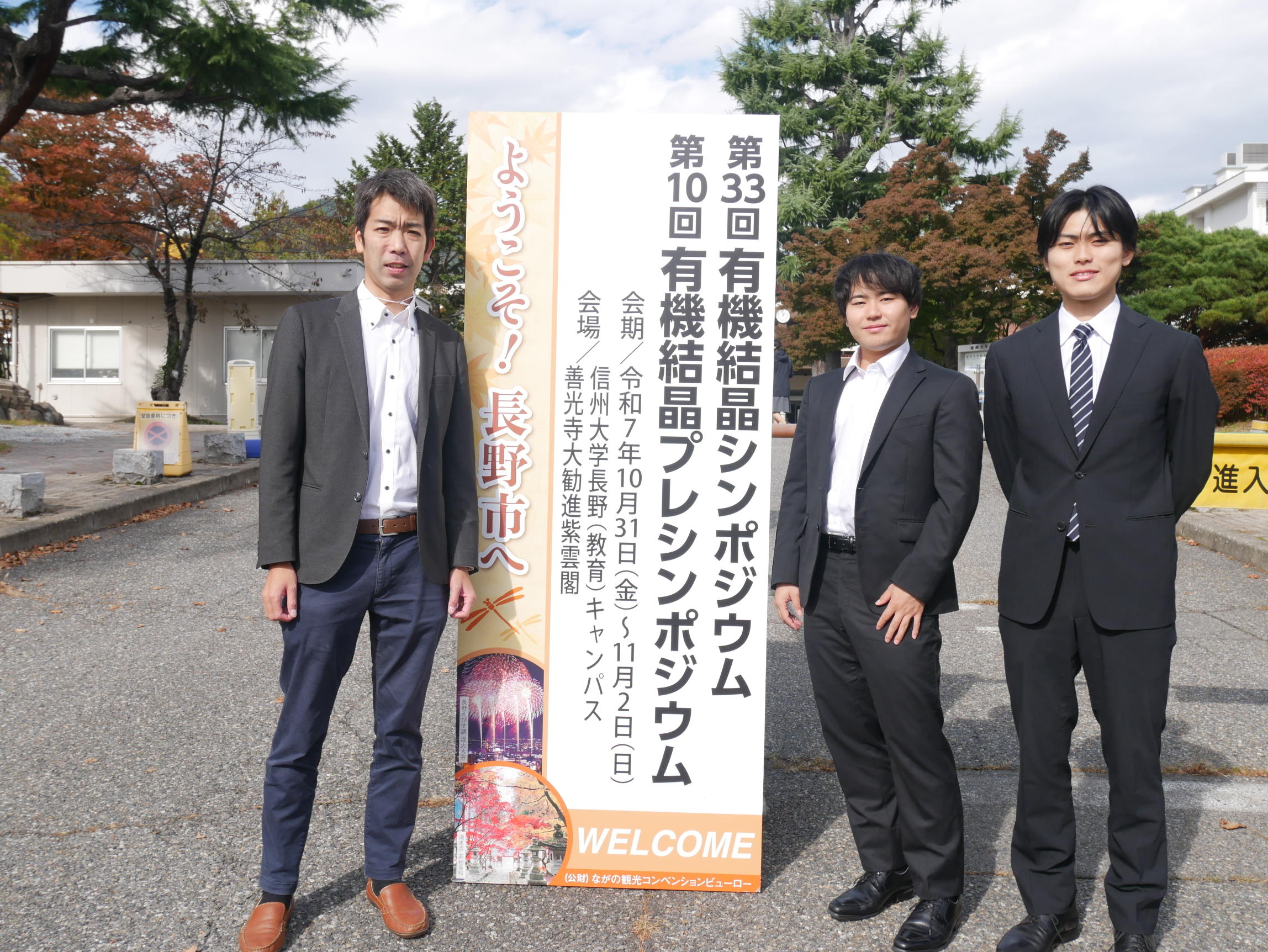
Green Science Cafe
I was in charge of the Green Science Cafe, an outreach event organized by the Institute for Green Science and Technology at Shizuoka University.
We gave a lecture introducing our research and conducted a simple hands-on experiment for the 17 participants, which included 9 elementary and junior high school students.

RESEARCH
Our group develops stimuli-responsive molecular-based materials, such as crystals, liquid crystals, organogels and etc. We try to elucidate so far unknown responses of such materials and provide novel functionality of molecules.
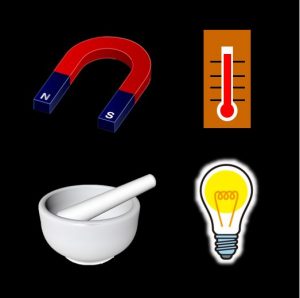
Molecular-based materials exhibiting stimuli-responsivity
Molecular crystals or liquid crystals often show properties and functionality different from its individual molecule itself. This is caused by the neighboring molecules within the assembled materials which are connected through various intermolecular interactions. This indicates that the molecular-based materials can show properties/functionalities based on assembled states. Upon applying external stimulations to such materials, such as temperature change, photoirradiation and mechanical stimulations, the assembled states/molecular arrangements can change. As a result, these molecular-based materials exhibit various responses, i.e., property changes and mechanical movement.
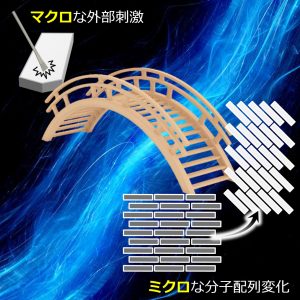
Bridging the gap between macroscopic externals stimulation and microscopic molecular arrangement
We have reported that the molecular-based materials exhibiting emission color changes, electronic conductivity changes, and mechanical movements upon applying mechanical stimulation. These stimuli-responses are caused by the “macroscopic” mechanical force by means of a spatula or a pestle/mortar, which leading to changes in “macroscopic” molecular arrangements and patterns of intermolecular interactions. Our group tries to elucidate precise molecular arrangements within the crystals/liquid crystals to identify the effect of external stimulation, bridging the gap between macro- and microscopic information.
Publications
2025
S. Ito, S. Nagai, M. Ikeya, T. Mashimo, T. Seki, H. Ito, Y. Sagara, T. Mutai, Y. Ooyama, K. Nakano,
J. Mater. Chem. C, 2025,
DOI: 10.1039/D5TC03324A.
T. Seki, M. Ikeda,
Cryst. Growth Des., 2025, 25, 10268–10272
DOI: 10.1021/acs.cgd.5c01174.
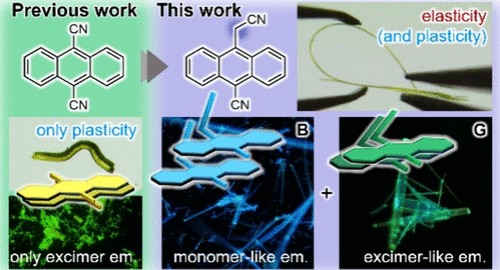
T. Seki, T. Okada, M. Ikeda, K. Yamamoto, S. Hayashi, Y. Kishida, H. Uekusa,
J. Am. Chem. Soc., 2025, 147, 27431–27437
DOI: 10.1021/jacs.5c04563.
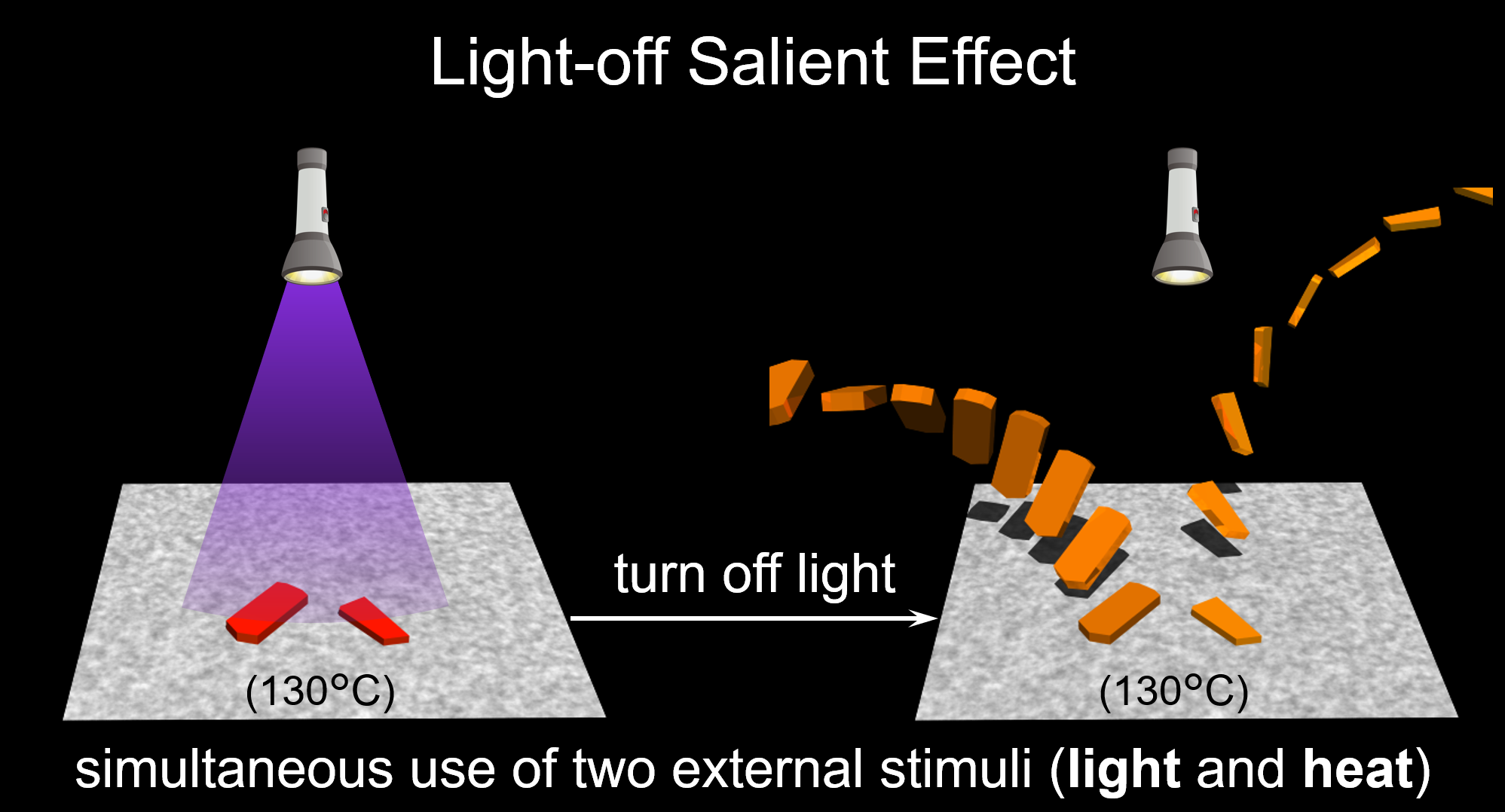
T. Seki, A. Yano,
Eur. J. Inorg. Chem., 2025, 28, e202400793
DOI: 10.1002/ejic.202400793.
